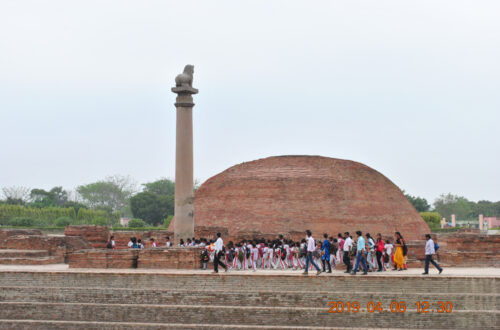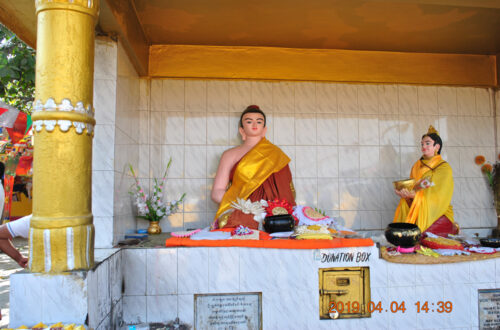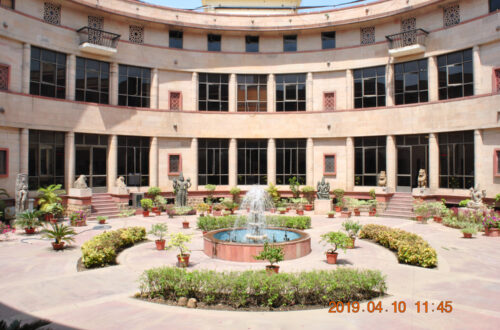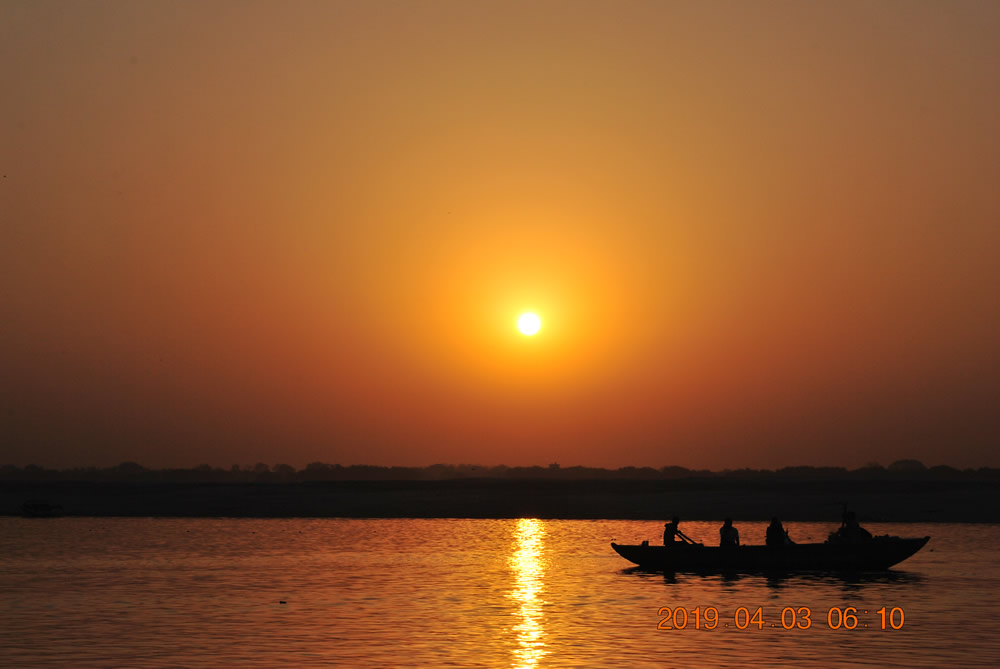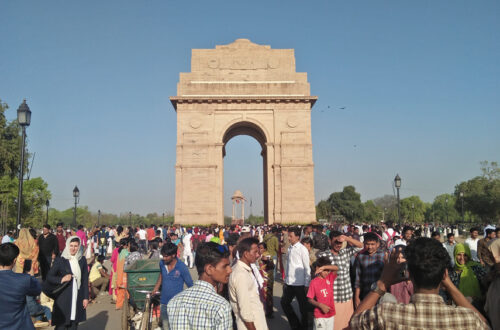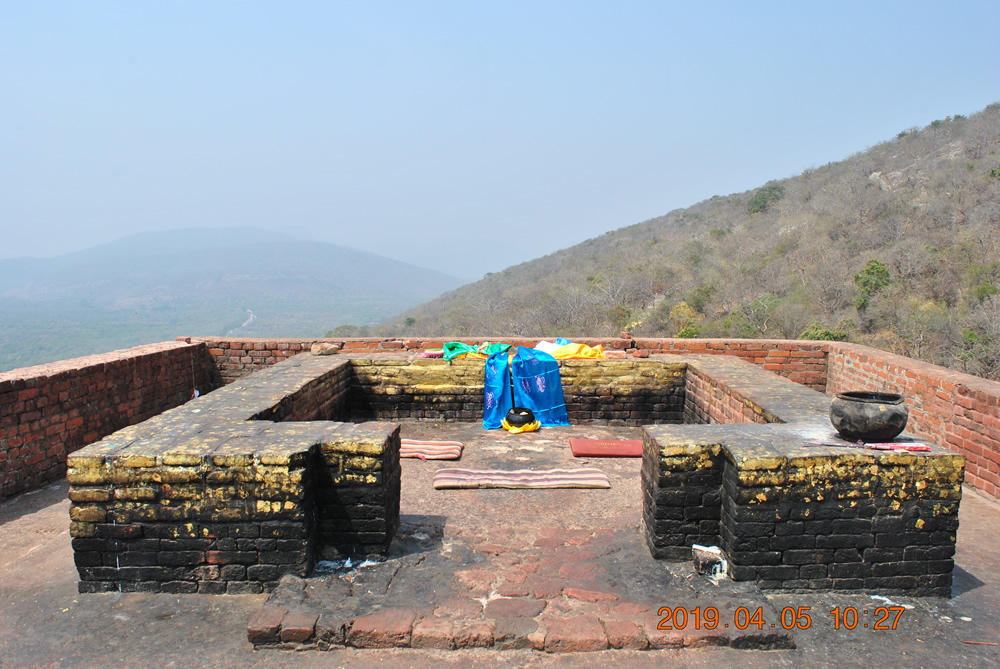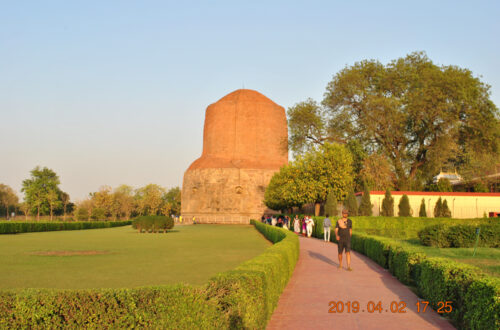Indian Pilgrimage Trip 9th
-
Day 1 :New Delhi
Travel Date:2019-04-01 New Delhi New Delhi serves as the political hub of India and the seat of the central government. As a cultural and economic center, it boasts a wealth of historical landmarks, museums, and iconic structures, such as the India Gate, Rashtrapati Bhavan (Presidential Palace), and the Lotus Temple. Moreover, New Delhi is renowned for its cultural diversity and thriving economy, making it one of the most prominent metropolitan cities in the world. Post Views: 209
-
Day 2: Varanasi – Sarnath
Travel Date: 2019-04-02 Varanasi Varanasi, also known as Benares or Kashi, is one of the oldest cities in India and among the world’s most ancient continuously inhabited cities. Located on the western bank of the Ganges River in the Indian state of Uttar Pradesh, Varanasi is revered as the spiritual capital of India. It holds immense religious significance for Hindus, Buddhists, and Jains. The city’s history dates back to around 2000 BCE or earlier, with numerous mentions in ancient Indian scriptures and legends. Sarnath, located near Varanasi, is the site where Gautama Buddha delivered his first sermon, making it a pivotal location in Buddhism, here has featuring a famous stupa…
-
Day 3 :Varanasi – Bodh Gaya
Trip date:2019-04-03 Varanasi Varanasi, also known as Benares or Kashi, is one of the oldest cities in India and among the world’s most ancient continuously inhabited cities. Located on the western bank of the Ganges River in the Indian state of Uttar Pradesh, Varanasi is revered as the spiritual capital of India. It holds immense religious significance for Hindus, Buddhists, and Jains. The city’s history dates back to around 2000 BCE or earlier, with numerous mentions in ancient Indian scriptures and legends. Sarnath, located near Varanasi, is the site where Gautama Buddha delivered his first sermon, making it a pivotal location in Buddhism, here has featuring a famous stupa and…
-
Day 4:Bodh Gaya – Sujata Temple – Pragbodhi Cave
Travel Date:2019-04-04 Sujata Temple Sujata Temple is a significant Buddhist site located in Bakraur village, near Bodh Gaya, Bihar, India. It marks the place where Sujata, a local village woman, offered milk-rice (kheer) to Prince Siddhartha before his enlightenment. This act symbolizes the Buddha’s realization of the Middle Way, as he abandoned extreme asceticism and regained strength before meditating under the Bodhi tree. The temple stands as a tribute to Sujata’s generosity and her pivotal role in the Buddha’s journey to enlightenment. Pilgrims visit this site to honor her contribution and reflect on the importance of balance in spiritual practice. Pragbodhi Cave Pragbodhi Cave, meaning “Cave of Pre-Enlightenment,” is located…
-
Day 5: Vulture Peak – Nalanda – Xuan Zang Memorial Hall
Travel Date:2019-04-05 Vulture Peak Vulture Peak, also known as Gṛdhrakūṭa, is located near Rajgir in Uttar Pradesh, India, and is one of the most significant Buddhist sacred sites. Siddhartha Gautama, the Buddha, delivered many teachings here, including the Lotus Sutra. Vulture Peak is renowned for its association with the Buddha’s sermons, symbolizing the wisdom and compassion of Buddhist teachings. The mountain offers serene beauty and a tranquil atmosphere, making it a vital site for Buddhist worship and meditation. It is also the origin of the “Vulture Peak Assembly” mentioned in Buddhist traditions, attracting countless pilgrims for reflection and reverence. Nalanda Nalanda, located in present-day Bihar, India, was a renowned Buddhist…
-
Day 6:Vaishali – Kesariya
Treval Date:2019-04-06 Vaishali Vaisali, an ancient and renowned city in India, was one of the significant places where Buddha preached. It served as the capital of the Vajji Republic, known for its thriving commerce, culture, and as one of the earliest democracies in history, establishing a republican system of governance. Buddha announced his approaching Parinirvana here and delivered important teachings, such as the Mahaparinibbana Sutta. Vaisali is regarded as a sacred Buddhist site, drawing countless pilgrims to pay homage and reflect on its spiritual legacy. Kesariya Stupa Kesariya Stupa, located in Bihar, India, is one of the most significant relics in Buddhist history. It is believed to be the place…
-
Day 7:Kushinagar – Angara Chaitya – Ramabha Stupa
Travel Date: 2019-04-07 Kushinagar Kushinagar is a renowned Buddhist pilgrimage site in ancient India, located in present-day Uttar Pradesh, India. It is famous as the place where Siddhartha Gautama, the Buddha, attained Mahaparinirvana (final nirvana). According to the Mahaparinibbana Sutta, the Buddha passed away peacefully between the twin Sala trees in Kushinagar. After his passing, his disciples conducted a grand cremation ceremony here, and his relics were distributed among various kingdoms for veneration. Historically, Kushinagar was a flourishing Buddhist center with numerous monasteries and monastic communities. However, it gradually declined due to political and historical changes. Modern archaeological excavations have reaffirmed its historical significance, making it one of the most…
-
Day 8:Lumbini – Kapilavastu – Nepal
Travel : 2019-04-08 Lumbini Lumbini, located in southern Nepal, is the birthplace of Siddhartha Gautama, the Buddha, and one of the Four Great Buddhist Holy Sites. According to Buddhist scriptures, Buddha was born here in 623 BCE under a sal tree while Queen Maya was strolling in the garden. Lumbini holds immense religious and historical significance as the origin of Buddhist faith. Key attractions in Lumbini include:Maya Devi Temple,Ashoka Pilla,Sacred Pond.Lumbini is recognized as a UNESCO World Heritage Site, drawing countless Buddhist devotees and visitors for pilgrimage and reflection. It stands as a vital symbol of global Buddhist culture. Kapilavastu Kapilavastu, an ancient city in northern India, is renowned as…
-
Day 9:Jetavana Vihara
Travel Date:2019-04-09 Jetavana Monastery Jetavana Monastery, formally known as Jetavana Anathapindika Arama, was the first officially established Buddhist monastic community in history. Located in the ancient city of Shravasti (present-day Uttar Pradesh, India), it was built on land purchased by the wealthy benefactor Anathapindika (Sudatta) from Prince Jeta, hence its name. Jetavana Monastery was one of the most frequented and long-lasting places where Buddha taught, with many significant scriptures, such as the Diamond Sutra and Lotus Sutra, being expounded here. Jetavana served not only as a residence and teaching center for Buddha but also as a crucial base for the Sangha to practice, observe monastic discipline, and spread Buddhist teachings.…
-
Day 10:National Museum of India · New Delhi
Travel Date:2019-04-10 National Museum of India · New Delhi The National Museum of India, located in New Delhi, is one of the largest and most significant museums in India. Established in 1949, the museum houses an extensive collection of artifacts and artworks spanning from prehistoric times to the modern era, showcasing India’s rich history, culture, religion, and art. Post Views: 175



